#dawid ogrodnik
Text






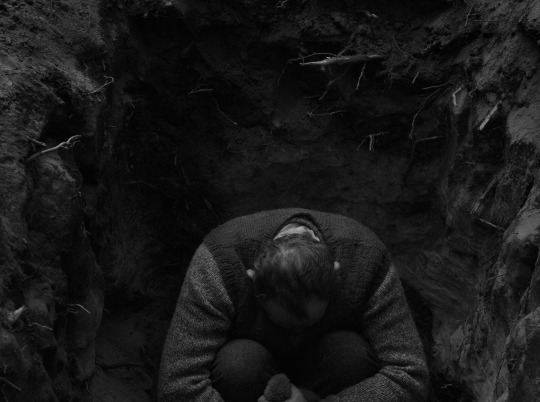



Ida (2014) | dir. Paweł Pawlikowski
#ida#paweł pawlikowski#agata trzebuchowska#agata kulesza#dawid ogrodnik#films#movies#cinematography#screencaps
274 notes
·
View notes
Text









#black and white cinema#film#ida#agata kulesza#dawid ogrodnik#pawel pawlikowski#transcendental style in film#agata trzebuchowska
4 notes
·
View notes
Text




Cicha noc [Silent Night] (Piotr Domalewski, 2017)
#Cicha noc#Silent Night#Piotr Domalewski#Polska#Poland#Eastern Europe#European people#Dawid Ogrodnik#Tomasz Ziętek#Arkadiusz Jakubik#Agnieszka Suchora#Maria Dębska#Tomasz Schuchardt#Paweł Nowisz#Elżbieta Kępińska#Adam Cywka#Jowita Budnik#dysfunctional family#Xmas#Christmas Eve#Natale#Navidad#Nadal#Holland#alcoholism#domestic violence#Gietrzwald#Warminsko-Mazurskie#migrants#home
3 notes
·
View notes
Text










#179
#ida#2013#paweł pawlikowski#agata trzebuchowska#agata kulesza#dawid ogrodnik#2010s cinema#polish cinema#black and white movies#b&w#photoset#cinematography#movie screenshots#movie screengrabs#movie screencaps#movie frames#movie#cinematography appreciation#movies#escapism through film#the beauty of cinema#10 frames from film#my ss#ida 2013#4:3#60s aesthetic
47 notes
·
View notes
Text
Second season: Rojst 97 (The Mire, developed by Jan Holoubek, 2021)
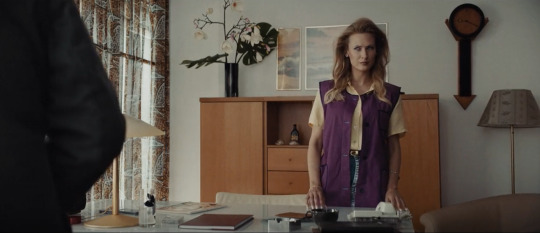
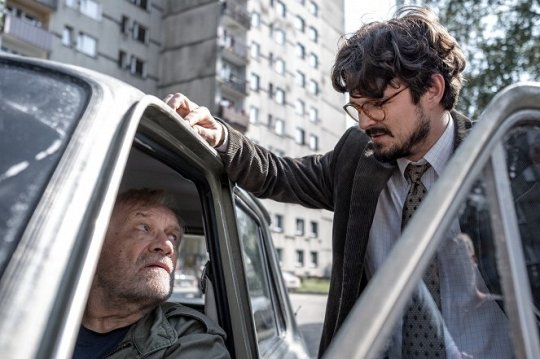





The second season of a catchy Polish crime series is binge-worthily entertaining and well-acted, though predictable plot-wise (who couldn't tell from the start that Czop's character is the villain with clout?). Różczka, Żulewska and Wichłacz are standouts: the first got her most compelling lead character, the second steals every scene she's in, and the third provides emotional vulnerability (but not mushiness).
#bingeing microdosed#second season#rojst 97#the mire#magdalena rozczka#Dawid Ogrodnik#lukasz simlat#andrzej seweryn#piotr trojan#piotr fronczewski#agnieszka zulewska#zofia wichlacz#ireneusz czop#marcin bosak#artur dziurman#michal pawlik
4 notes
·
View notes
Text


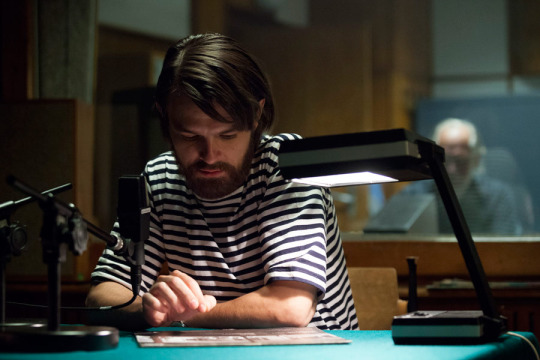

• Ostatnia rodzina (The Last Family; 2015)
J. P. Matuszyński
https://www.instagram.com/wjednejosobie/
#aesthetic#filmstagram#quotes#recenzja film#dark academia#netflix movie#polish movie#european film#independent cinema#cinemetography#european cinema#film festival#andrzej seweryn#dawid ogrodnik#zdzisław beksiński#beksinski
3 notes
·
View notes
Text
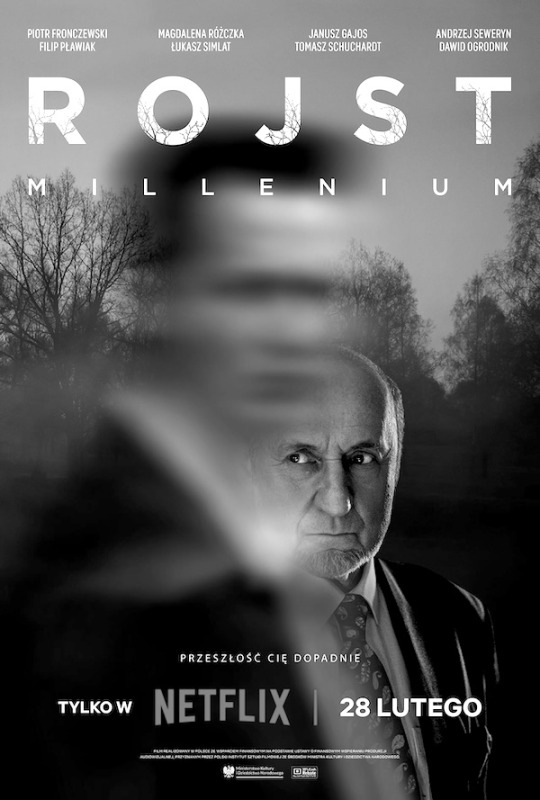
Currently Watching
THE MIRE - SEASON 3 "MILLENIUM"
[ROJST]
Jan Holoubek
Poland, 2024
#watching#Dawid Ogrodnik#Andrzej Seweryn#Magdalena Rózczka#Agnieszka Zulewska#Lukasz Simlat#Michal Pawlik#Cezary Kolacz#Filip Plawiak#Marianna Gierszewska#Jan Holoubek#Polish television#2024
1 note
·
View note
Text
'Ida,' directed by Pawel Pawlikowski
Movie, 2013
A simple story with a small cast of characters, revolving around a convent girl about to take her vows, and her family’s intervention, in the shape of a hedonistic aunt. Their exploits outside the convent are part family history investigation, part road movie and part coming of age drama. The familiar themes and big dramatic tensions are taken and played beautifully in black and…

View On WordPress
#2013#Coming of age#Family#Kulesza Agata#Ogrodnik Dawid#Pawlikowski Pawel#Poland#Road movie#Trzebuchowska Agata
0 notes
Text
Rojst/The Mire/Rojst ‘97/The Mire ‘97/Rojst. Millenium/The Mire. Millenium (dir. Jan Holoubek)
A crime series consisting of a three-part journey into the times of deep communism in Poland, suffocating cigarette smoke in every possible room, gloomy buildings and people with minor or major secrets.
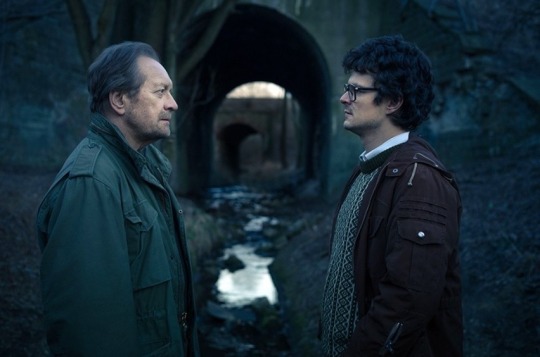
This story is so complex with its characters and storytelling that I don’t really know where I should start… Well, alright let’s start with these two in the picture above. Witold Wanycz (played by Andrzej Seweryn) and Piotr Zarzycki (played by Dawid Ogrodnik). The chemistry between these two actors is remarkable! They fits their characters so well and from the very beginning you just believe both of them to be an old journalist troubled by his past in this small town, and young, spirited one, who wants to reveal the truth, and despite being quite an annoying character cares about justice. The show has many excellent supporting characters as hotel manager Kocioł or Nadia. If some fans of World on Fire ever read it, they will be nicely surprised by presence of Zofia Wichłacz, who plays Piotr’s wife. But anyway! The plot takes place in 80s, in gloomy small town where a prostitute and a communist activist are murdered. I don’t want to spoil anything but you can already say by the times it happens it’s not easy to solve… Wanycz wants to run away from the town and Zarzycki wants to solve the case with him. And it’s all starts spinning! Everyone in the town lies of course.
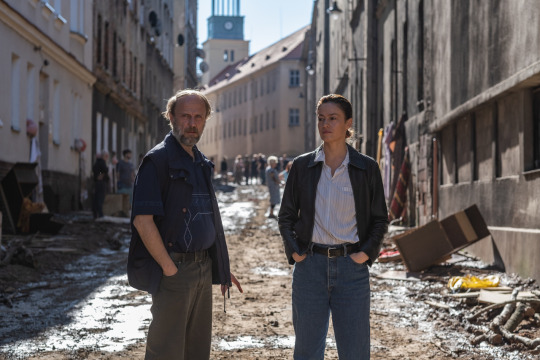
Second series takes place also in the same town, but in 1997 and introduces new characters, which you can see in the pic. My absolutely favourite sergeant Mika (Łukasz Simlat), and sergeant Anna Jass (Magdalena Różczka). Year '97 was the period of the greatest flood in over a century in Poland and the plot covers the aftermath of it. It takes place after Poland became fully independent but the hallmarks of communism are evident at every turn. In district Gronty somebody finds the body of a young boy, and water washes away the bones of people killed there during the war. In general it’s a mess. Police try to work on the case but again, nothing in this town is easy and everybody lies. Of course there are old friends occurring there as well from the previous series. We have some flashbacks into the past back to 1940s, and we get to know Wanycz’s story.
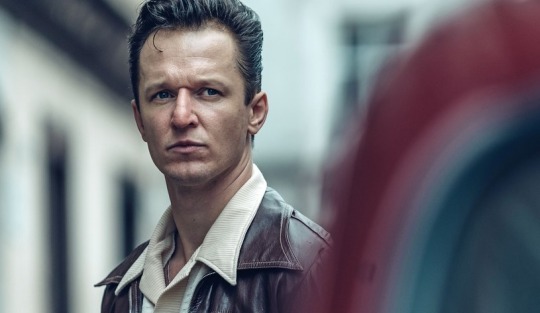
I really think that the latest part of the series is my favourite. Again, all previous characters appear, but the creators take the audience back into the super communist 1960s, apart from 1999, and we have some more light shed on Mr Kocioł (played by Filip Pławiak as younger version of him)
- for comparison here’s older Kocioł and younger one, can you seeee the visionnnn? -


Anyway, there is more and more of dark stuff happening, this essay is shitty and I don’t want to spoil anything, just please give it a chance! It is now streamed on Netflix. Some stuff may be a bit hard to understand for non-polish folks in terms of cultural aspect or some sayings but I assure you all, it’s a really captivating crime/drama series ✨ and Jan Holoubek is a geniussss! I just love that it reflects on people’s lives in hards times and what human’s nature is able to do and that… well… karma is real.
8 notes
·
View notes
Text
Фильмы
Валентинка (Blue Valentine) 2010 https://www.imdb.com/title/tt1120985/
Carol 2015 https://www.imdb.com/title/tt2402927/
Свет в океане (The Light Between Oceans) 2016 https://www.imdb.com/title/tt2547584/
Белая королева (1 сезон 1,2,3 серии) 2013 https://www.kinopoisk.ru/series/723644/
Ида
Мой король (2015) https://www.kinopoisk.ru/film/821508
Книги:
Айрис Мердок "Под сетью"
Алексей Варламов "Звездочка"
Кормак Маккарти "Дорога"
Толм Тойбин "Нора Вебстер"
Барбара Демик "Повседневная жизнь в Северной Корее"
0 notes
Photo

Agata Trzebuchowska in Ida (Pawel Pawlikowski, 2013)
Cast: Agata Kulezsa, Agata Trzebuchowska, Dawid Ogrodnik, Adam Szyszkowski, Jerzy Trela, Joanna Kulig. Screenplay: Pawel Pawlikowski, Rebecca Lenkiewicz, Cinematography: Ryszard Lenczewski, Lukasz Zal. Production design: Marcel Slawinski, Katarzyna Sobanska. Film editing: Jaroslaw Kaminski. Music: Kristian Eidnes Andersen.
A successful film needs the correct balance of story and style, and when the story is as straightforward as Ida's, there's a great risk of overwhelming it with stylistic tricks. A novice called Anna (Agata Trzebuchowska) is about to take her vows to become a nun when she learns that she has an aunt, Wanda Gruz (Agata Kulesza), who wants to meet her. It is the 1960s, and Wanda is a judge in the courts of the communist government with a reputation for having for having presided brutally over the show trials of the 1950s that solidified communist power. She tells Anna, who was raised in an orphanage, that she was born to Jewish parents, one of whom was Wanda's sister, and that her birth name was Ida Lebenstein. Anna goes with Wanda in search of the graves of her parents and the son whom Wanda left with them when she joined the resistance during the war. Along the way, the tough, hard-drinking, sexually liberated Wanda, determined to provoke Anna out of her ascetic, devout ways, picks up a handsome young hitchhiker named Lis (Dawid Ogrodnik), a jazz saxophonist on his way to a gig. The story that director Pawel Pawlikowski and co-screenwriter Rebecca Lenkiewicz develop from this situation is told in an austerely beautiful manner. Two cinematographers are credited: Lukasz Zal took over as director of photography after Ryszard Lenczewski became ill during filming; both were deservedly nominated for cinematography Oscars. Pawlikowski chose to film in black-and-white to evoke the Polish films of the 1960s, the era of the young Roman Polanski, Jerzy Skolimowski, and Andrzej Wajda, although it's more accurate to refer to the cinematography as monochrome because the use of the many shades of gray and the emphasis on the textures of walls and skies and landscapes is extraordinary. The images are also strikingly framed: Characters rarely appear in the direct center of the screen, but are shifted toward the bottom or the corner of images. (Remarkably, the film also sometimes moves the subtitles from the bottom to the top of the frame to accommodate this placement.) Such manipulations could be seen as mannered, but I think it works to suggest that the lives of the characters themselves have been placed somewhere slightly off-center.
0 notes
Text










Ida (2014) | dir. Paweł Pawlikowski
#ida#paweł pawlikowski#agata trzebuchowska#agata kulesza#dawid ogrodnik#films#movies#cinematography#screencaps
32 notes
·
View notes
Photo

Ida, 2013
395 notes
·
View notes
Text

Ida (2013) - dir. Pawel Pawlikowski
29 notes
·
View notes
Photo






Ida (2013)
Dir. Paweł Pawlikowski
Language: Polish
#ida#2013#polish#Paweł Pawlikowski#dawid ogrodnik#agata kulesza#agata trzebuchowska#polish cinema#movie screencaps#film screenshots#ida 2013
60 notes
·
View notes

